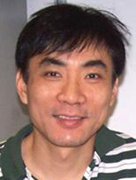
|
TANG, Lei Han Contact:
Rm. T903, Hong Kong Baptist University |
|
||

Department of Physics, Hong Kong Baptist University


|
TANG, Lei Han Contact:
Rm. T903, Hong Kong Baptist University |
|
||